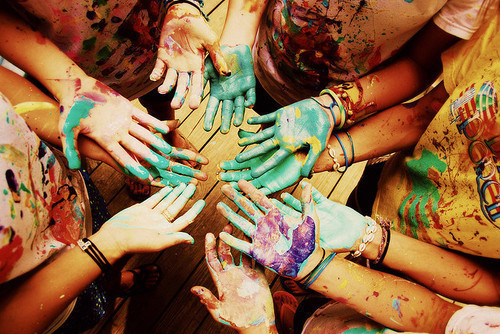
For those who have been following this blog for a long time, you know that I usually like to take a very comprehensive and thorough approach to happiness and mental health.
And one big part of that puzzle, to me, is creativity.
Often times, creativity can provide us with many benefits. It helps keep our brains sharp, it give us a greater sense of self-awareness, and it helps us deal with personal issues more effectively.
There are many different reasons why I find having a creative activity can be valuable to our happiness and mental health. I’m going to explain most of these key reasons throughout the rest of this article.
Increased self-awareness
It’s difficult to express some emotions and thoughts using just words, but things like art, music, and photography provide us with the ability to express these emotions and thoughts through other mediums.
This allows us to discover many emotions and thoughts, perhaps some hidden in our subconscious, that we can’t access through ordinary consciousness and rational thinking.
Art and creativity gives us a way to formulate these hidden and abstract emotions into something more tangible and accessible. This often helps us develop a deeper and more intimate understanding of ourselves, and our internal world.
Learning a new skill
Creativity often requires that we learn a new skill: how to play a guitar, how to paint, or how to sculpt. And when we learn new skills, this often improves our psychology in a number of ways.
First, it exercises our brains. Learning new things keeps our brains active, sharp, and flexible. When we stop learning new things, often times our brain’s power will begin to diminish, like when you stop working out a muscle.
Also, learning a new skill boosts our self-esteem. When we finally learn how to play our first song on guitar, we think “Wow, I learned to do something pretty damn cool.” Learning one new skill can often improve our confidence to learn other new skills in the future. It can start a positive cycle of continual learning and development.
A state of engagement or flow
When we get really immersed in a creative activity, psychologists say that we enter a state known as flow.
Flow is a state of high engagement or sharp focus on one particular activity.
It’s a very trance-inducing state, similar to many forms of meditation and prayer.
If you’ve ever gotten so lost in an activity that you lost all sense of time, then you’ve probably experience a state of flow. In many ways, creative activities can produce this same meditative state.
Flow is associated with intense feelings of enjoyment, and it is one of the five factors of happiness according to Martin Seligman’s PERMA theory.
Power and control
When we start becoming proficient in something creative, there is a new sense of empowerment. It gives us a feelig of control, and it becomes an example of the ways our ideas and intentions can have a real effect on the physical world.
Perhaps this is why so many people with mental illness show interest in creativity. For many, it may be the one area of life where they feel they have some power over their situation.
This might also be why art therapy can be an effective supplement in a lot of mental health treatment. When we engage in activities where we feel in control, these activities can often become a source of stress relief.
Creativity can be a source of empowerment for people with and without mental illness.
Conclusion
These are some of the key ways that creativity can benefit our happiness and well-being. And the best part is, most of this holds true for any kind of creative act whether it be painting, music, photography, sculpting, cooking, dancing, or whatever.
Enter your email to stay updated on new articles in self improvement:
